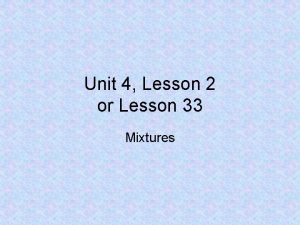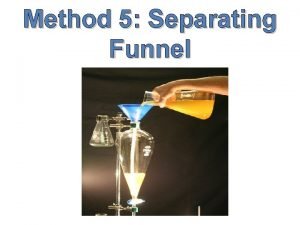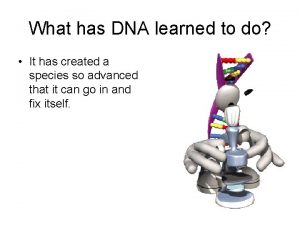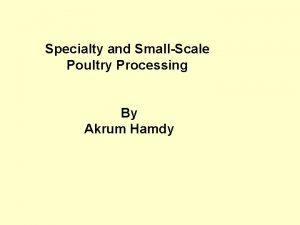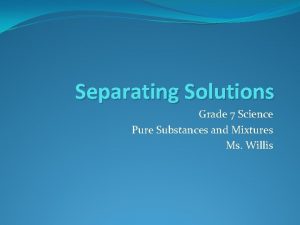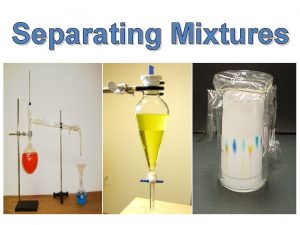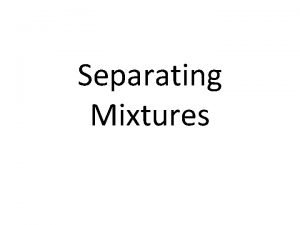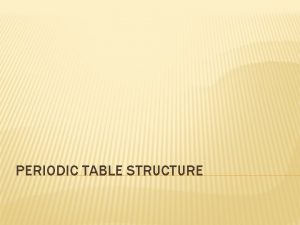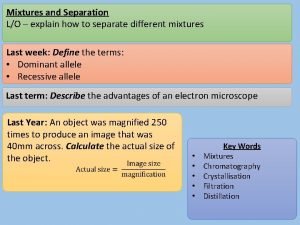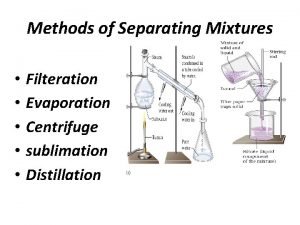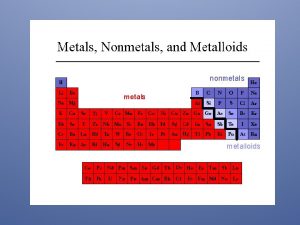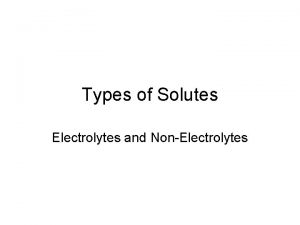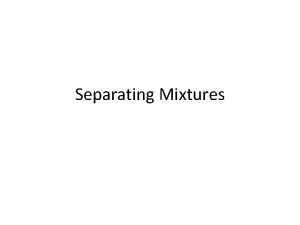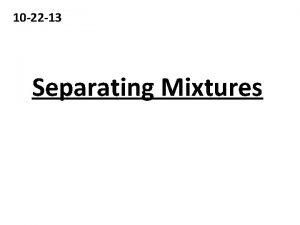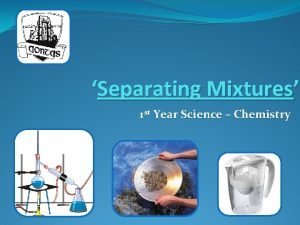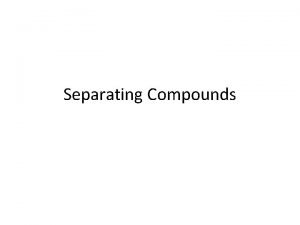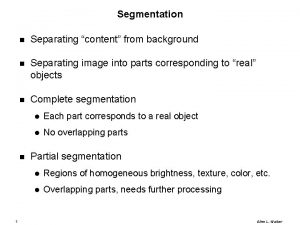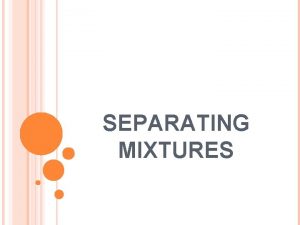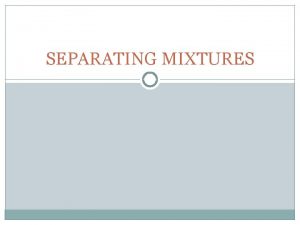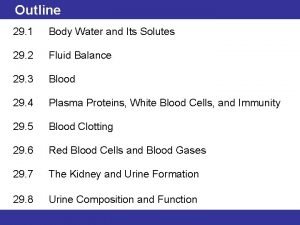Lesson 17 Separating Solutes Lesson 17 Separating Solutes














- Slides: 14

Lesson 17 Separating Solutes

Lesson 17 - Separating Solutes You will use paper chromatography to separate solutes and to compare the dyes found in different colored inks.

Lesson 17 - COS 1. 0 1. 1 1. 2 1. 3 1. 4 1. 5 6. 0

Objectives • Use paper chromatography to analyze and identify inks. • Apply paper chromatography techniques to “solve a crime”.

Getting Started • Pour about 25 m. L of water into the 250 m. L beaker. Quickly (about 1 or 2 seconds) dip the tip of the green marker into the water and observe what happens. • In your notebook answer the following: A. What happened when you put the tip of the green marker into the water? B. Based on your observations, what do you know about the ink?

Lesson 17 - (1 -1) chromatography - a process used to separate different solutes from a solution by passing them through a medium. absorption - one substance penetrates into the inner structure of another….

Lesson 17 What does the process of paper chromatography indicate about an ink solution?

Lesson 17 If…. . then…. because…

Inquiry 17. 1 - Analyzing Inks Place a spot of green ink (2 mm) on one piece of chromatography paper. Fold end of paper and hang the paper over a pencil. Place the pencil and paper over the beaker, with the tip of the paper in the water. Observe what happens over the next five minutes. Write conclusions on the student sheet.

Inquiry 17. 2 Comparing Inks 1. 2. Gather materials. Place one dot of each of the following colors on the chromatography paper: green, red, black and brown. G R BL BR 3. 4. Fold the paper about 3 cm. from the top and hang it over a pencil resting across the top of a beaker. Observe. Describe and draw what happens with each dye color.

Lesson 17. 3 Inquiry 17. 3 Identifying Inks (

Lesson 17 -

Lesson 17 - (1 -2) • Ink is made up of several dyes of different colors that are dissolved in water. • Chromatography is a technique used to analyze solutions. • Solutes in the ink must be soluble in the solvent for the chromatogram to be produced. • Different solutes move through paper at different speeds. As the solution moves up the paper, the various components of the solution separate out and occupy distinct areas on the paper.

Lesson 17 - (2 -2) • Less soluble dyes move slower that more soluble dyes. The faster moving, more soluble dyes will eventually separate. • The characteristic properties of each solute determine the way in which that solute separated from a mixture of solutes in a solution. • Chromatography does not separate colors; it separates solutes. • Chromatography is often used to separate colorless substances……….
 Unit 4 lesson 2 solutes and solvents
Unit 4 lesson 2 solutes and solvents Solutes and solvents grade 7 science
Solutes and solvents grade 7 science Separation funnel technique
Separation funnel technique Separating dna
Separating dna Separating eggs techniquies
Separating eggs techniquies Separating solutions
Separating solutions Filtration examples in everyday life
Filtration examples in everyday life Examples of
Examples of Magnetism in separating mixtures
Magnetism in separating mixtures Separating axis
Separating axis Periodic table separating metals and nonmetals
Periodic table separating metals and nonmetals What is matter natural science
What is matter natural science Chromatography separating mixtures
Chromatography separating mixtures Evaporation
Evaporation I am malleable, but i do not have a shiny luster.
I am malleable, but i do not have a shiny luster.
